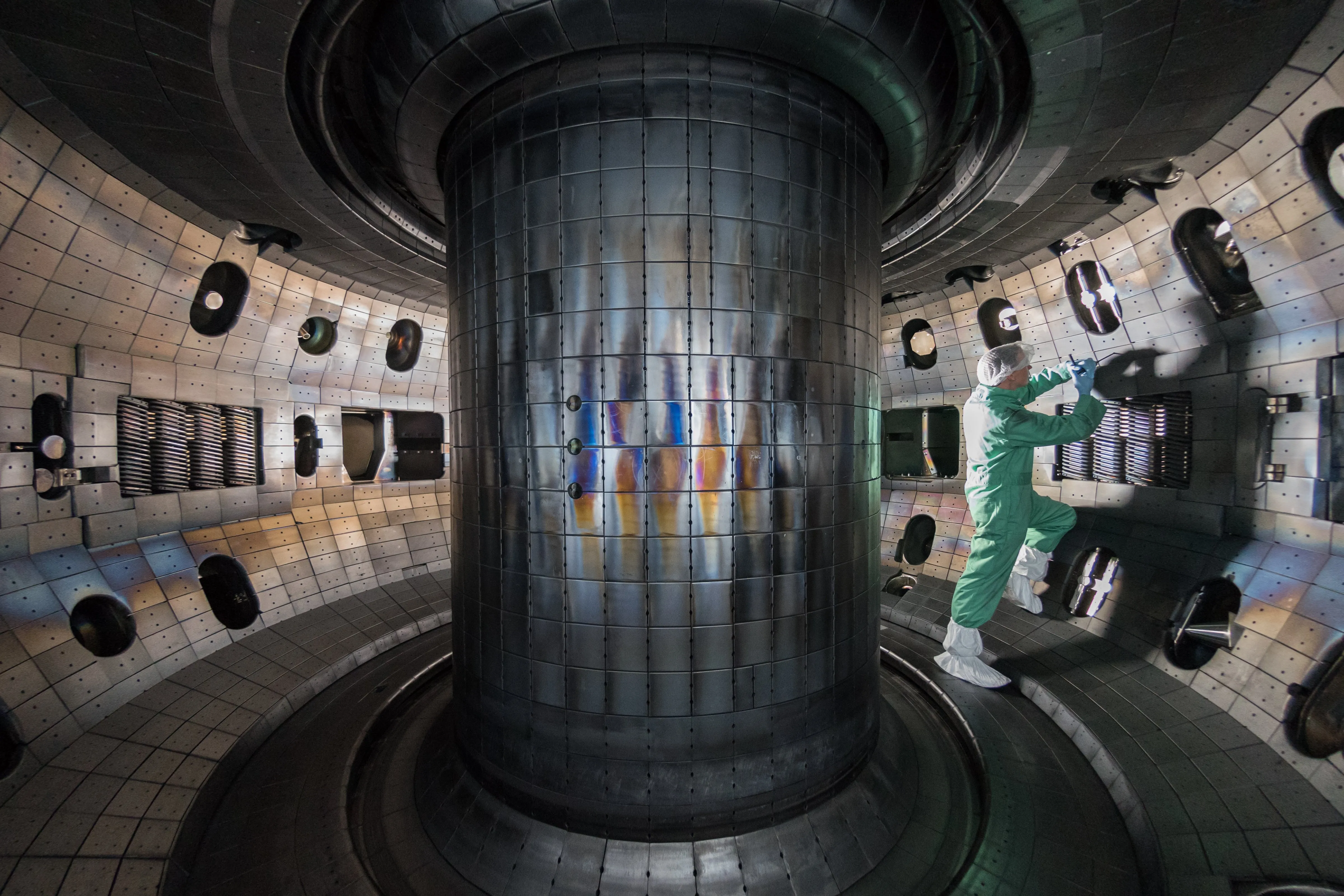DIII-D Scientists Push the Performance for Fusion Plasmas
By Cyd Cowley
The DIII-D tokamak has pushed its fusion plasmas to new high-performance, power-plant relevant regimes. The work was enabled by a collaborative team working across multiple national labs and universities, including General Atomics, MIT, and the Chinese Academy of Sciences.
But what have they done, how did they do it, and how can these experiments enable the fusion power-plants of the future?
What have they done?
As part of a study recently published in Nature, scientists modified the experimental inputs of the DIII-D tokamak, located in San Diego, California. By tweaking several machine parameters, the experiments successfully produced high-performance plasmas that were characterised by three main benefits:
- High densities. In tokamaks the core density is typically limited, and can only be below a value known as the Greenwald limit. In these DIII-D experiments, they were able to maintain a plasma with a core density 20% higher than the Greenwald limit.
- Good confinement. In fusion, one important measure of device performance is the energy confinement time, which determines how quickly energy leaks out of the plasma. These experiments achieved a confinement time 50% greater than standard high-confinement mode.
- Low edge transients. In tokamaks, transient events can sometimes send large amounts of power away from the central plasma. In these regimes, the strength of these events was drastically reduced.

A view inside the DIII-D tokamak
How did they do it?
Central to achieving the high densities of the experiments in question is the presence of an Internal Transport Barrier, or ITB. An ITB is effectively a region in the plasma with less leakage than usual. The ITB was brought about by operating with a wide plasma, with a higher ratio of plasma pressure to magnetic pressure.
As well as enabling good core densities, the presence of Internal Transport Barriers reduced the strength of Edge Localised Modes, which are harmful events that can expel power from the plasma towards the surrounding material of the device.
Though previous experiments have achieved good performance with ITBs, the most recent experiments at DIII-D pushed performance further by injecting more hydrogen and less impurities into the machine. Typically, impurities such as nitrogen are injected into tokamaks to cool them down and prevent damage to surrounding material. However, these impurities can also drop fusion performance by radiating power away, and by reducing the impurity radiation, these recent experiments at DIII-D were able to further increase the energy confinement.

The confinement enhancement and density (as a fraction of the greenwald density) plotted for over 3,600 discharges at DIII-D
Why is it important?
Fundamentally, the field of fusion is a game of optimisation. There are thousands upon thousands of changes we could make to fusion devices, from wall material, to the shape of the plasma, to how and where we inject fuel into the machine. And all of these changes centre around fusion energy output—trying to produce the greatest amount of fusion energy at the lowest possible cost.
This work at DIII-D showed clear progress in this optimisation. For example, by operating with high densities, a power-plant can achieve elevated fusion reactions. Moreover, by reducing strength of harmful transient events, the maintenance (costs) of a future fusion power-plant can be drastically reduced.
Though future devices may look very different from DIII-D, the work demonstrates effective methods for improving performance. After all, there are thousands of small tweaks that could be made to a fusion plasma, and optimising machine performance can take decades. So, having work like this can provide valuable direction and things to try—so that when we start to operate the fusion power-plants of the future, we can hit the ground running.
